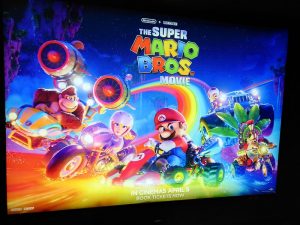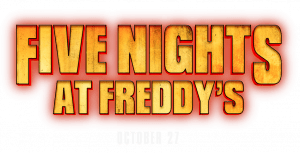Disclaimer: this article will be spoiling both the Mario Bros and the Five Nights at Freddy’s movies. You have been warned.
Film adaptations. These two words, while seemingly innocuous, hold enough significance to cause extended (and often heated) discussion when brought up during conversation, especially in gaming circles. While games being reshaped into a cinematic format is nothing new, the release of The Super Mario Bros. Movie and Five Nights at Freddy’s (the movie) has restarted debates about whether film versions of our favourite games live up to the hype. Spoiler alert — it definitely doesn’t. At least, these two films don’t.
Before I get cancelled for daring to raise a finger against these two excessively successful films, allow me to explain my point of view. I believe it is clear as day that no matter how much studios claim that the movie is ‘for the fans’, it never forgets the main moneymaker — the general public, who are watching the movies casually. This is made explicitly clear with the Super Mario Bros Movie, which wrecks both the characters and in-game lore just to conform to the public’s needs, or to further the plot.

The Super Mario Bros Movie (Image via Elliot Brown on Flickr)
It goes without saying that the voice actors for the film were hired purely based on their fame, and ability to bring in more viewers, rather than if they actually suit the character. Ditching the already existing voice actors Charles Martinet and Samantha Kelly, Nintendo and Illumination instead opted for Chris Pratt and Anya Taylor-Joy. While both are amazing actors in their own right, neither of them are voice actors, and thus lack the skill to bring a character to life relying solely on their vocal chords and nothing else. And you know that the mess-up in hiring is serious when audiences who typically turn a blind eye to how flat certain characters sound (my friends and I seem to be the only ones complaining about how Peach sounds less like an actual character, and more like an actress trying her best in a recording studio), actually complain about how a cast member ‘ruins’ a role.
Mario’s lack of an Italian accent aside, the movie continues to be unfaithful towards the series. While the animation and set design for the movie are unanimously praised as amazing in their ability to bring the world of the games to the big screen, it still has points where the movie defies the games’ logic, simply to ensure fan satisfaction with the game references while moving the story along manageably. The rainbow road that appears after the main gang drives back to Mushroom Kingdom breaks apart like how a normal bridge would, instead of maintaining its form as a literal rainbow as shown in the games. And due to plot conveniences, the road leads not into space, but appears to be close enough to the ground that you can still spot the various landscapes below the main cast. Even the Super Star, the main cause of conflict in the movie, defies the typical in-game rules as it turns Mario and Luigi invulnerable to all physical attacks, which is simply not how it functions in the Mario Bros games.

Five Nights at Freddy’s movie poster (Image via Blumhouse on Wikimedia Commons)
However, all these mistakes can be overlooked when one considers the absolute mess that was the Five Nights at Freddy’s movie. For me, the worst modification was just how docile and friendly the animatronics now seem. Aside from the scene where they chase down and murder the intruders, the FNaF gang are transformed into adorable mascots halfway through the movie, what with them interacting with the human characters (which causes them to lose their threatening aura by familiarising and humanising them), and building a whole pillow fort with Abby, changing them from friend to foe. If I had to guess why Scott and Blumhouse committed to this revision (other than for comedic effect, of course), then it’s most likely they wanted to make the animatronics endearing to appeal to a younger audience. While an unintended effect, it is funny how this mirrors Monty’s transformation in Security Breach from a towering hunk of destruction, to a creature akin to a dog that players coo and laugh at. While the film attempts to revert this transformation near the end of the movie, by having the Faz Gang attack Mike and Abby while under the influence of Afton, any sense of danger is immediately removed by the fact that these plush-like monsters can be easily disabled by a mere taser.
Unfortunately, this change in the animatronics’ behavioural pattern isn’t the only thing that exchanges the horror element for a shot at attracting mainstream audiences. Originally, the animatronic suits are supposed to be springlocked, and Afton famously meets his mortal demise when the yellow bunny suit he uses has its springs activated, and the internal wiring of the costume pierces through his whole body. In making this movie PG-13, Scott threw away his chance to showcase this horrifically bloody scene on the silver screen, by straight up modifying the suit’s internal design to simply be two metal ribs, which puncture Afton’s body after he is attacked by the cupcake. And of all the ways he could have been defeated, Scott has the only animatronic that isn’t mainly operated and filmed by physical means, the cupcake, attacking the main antagonist. Not only did this become more fuel for laughter in the theatre when my friend and I first watched the movie (I mean, I never imagined Chica’s cupcake would be what causes William I-always-come-back Afton’s physical death), but it sacrifices what could be a dramatic moment of comeuppance and horrifying violence from the main animatronics to their killer, purely because it was probably easier to animate the cupcake with CGI than it was to coordinate the physical animatronics.
So, to answer my question in the title of this article — film adaptations of games will unfortunately be a nay for me. While most fans are so happy to see their favourite games brought to the big screen that they are willing to ignore all these flaws or inconsistencies, I for one cannot get past how studios have already and will continue to betray the original work, just to cater to both hardcore fans and the general public.
Featured image by Nintendo + Illumination on Wikimedia Commons
